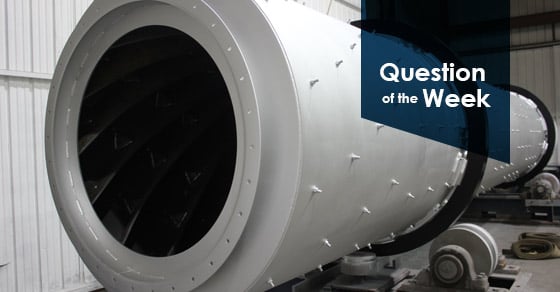Direct and indirect-fired rotary dryers are used in a variety of industrial settings to dry bulk solids. While the two are both comprised of a rotating drum and function to reduce a material’s moisture, several differences between direct and indirect dryers exist:
Operation: direct-fired dryers use direct contact between the material and drying air to dry the material, with the potential of using internal lifting flights to maximize the heat transfer. Conversely, indirect dryers use heat emanating from the drum’s shell to dry material via radiation and conduction, avoiding direct contact between the material and drying air.
Material of Construction: direct dryers are primarily constructed of carbon steel, and indirect dryers are primarily constructed using a high temperature alloy.
Industrial Use / Applications: Direct-fired rotary dryers are used more often than their indirect-fired counterparts, and are commonly seen in the agriculture and mining industries. Indirect dryers are ideal for niche applications, such as processing food grade materials, combustible materials, and fine materials such as pigments, because they allow the opportunity to create an inert processing environment, and also avoid the risk of entrainment when working with fine materials.
For more in-depth information, read our blog post Indirect vs. Direct Drying, or contact our Thermal Processing Experts today!


